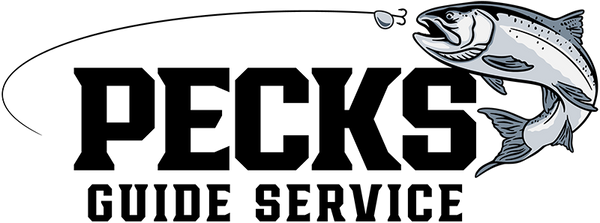
Salmon
Share
Chinook (King) Salmon
The Chinook salmon, also known as the king salmon and Oregon's state fish, is the largest of the Pacific salmon species. While it can weigh upwards of 50 pounds, the more common range is between 10 to 25 pounds.

How to Identify a Chinook (King) Salmon
- Ocean Appearance: In the ocean, Chinook salmon often have a purple hue on their backs, with silvery sides and bellies. They also feature large oblong black spots on their back and round black spots on both lobes of their tail, though these tail spots may be obscured by the silver pigmentation.
- Freshwater Appearance: When returning to freshwater to spawn, Chinook salmon darken in color and develop red coloration on their bellies and fins.
- Large black spots on the back, dorsal fin, and both the upper and lower lobes of the tail.
- Black mouth with a black gum line.
- A juvenile Chinook salmon is known as a "blackmouth".
- Prominent teeth.
- Average size scales.
- Silver pigment on the tail.
Coho Salmon
In the ocean, Coho salmon can closely resemble Chinook salmon. However, Coho salmon can be distinguished by a white gum line on the lower jaw with darker coloration both inside and outside the gum line, and they only have spots on the upper lobe of their tails. When Coho return to freshwater, their sides turn red, while their backs, heads, and fins become dark greenish. Adult Coho salmon may reach 25 pounds or more, but they rarely exceed 15 pounds.

How to Identify a Coho Salmon
- Black spots on the back, with a few spots on the upper portion of the tail.
- White mouth with a white gum line, possibly a black tongue.
- Average-sized scales.
- Silver pigment on the tail.
- Sharp and strong teeth.
- Tail has just a few scattered spots, usually on the upper lobe, with silver streaks.
- Wide caudal peduncle (the body of the fish just before the tail).

